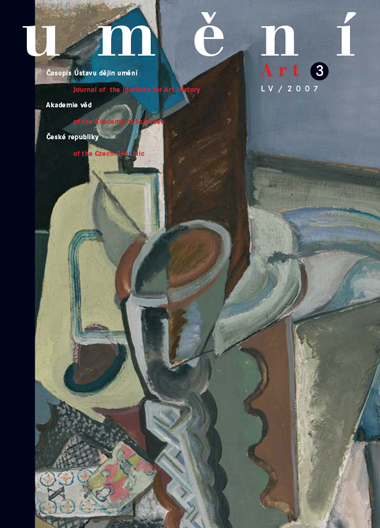Miriam Natoufová
Madona z Michle?
In 1856, Franz Halla donated a statue of the Virgin Mary with the Infant Jesus for the chapel at Michle. Thanks to this sculpture, the 'Michle Madonna', a theory arose as to the first stylistically integrated sculptural group of the Middle Ages in Bohemia whose core was created by a single master. Traditionally, the sculpture was linked with the Znojmo Madonna, the statue of St Florian, the Apostle of Veverská Bítýška, the Madonna of Velké Meziříčí, the Prostějov Madonna, Madonna at the Broumov monastery church, the Madonna at Dýšinné near Pilsen and the Crucifixion at Hradčany. The group, whose style has its roots in France and the Rhineland, has been dated to the 1330s or 1340s and is reckoned to have originated in Brno. These hypotheses have been reappraised by Jiří Fajt and Robert Suckale, who have cast serious doubt on both the Moravian origins of the group and the alleged originating master with his assistants or successors. I should like to take this occasion to cite an entry in the Michle church chronicle on Franz Halla, who was from Michle and inherited the statue from his parents, according to Fajt and Suckale. In their view, it makes more sense to place the statue, and the entire group along with it, in the artistic context of Prague rather than in that of Brno. In order that we may verify the thesis outlined above, we must return to the actual wording of the entry in the Michle chronicle. However, the wording of the entry on Franz Halla's donation differs from that Jiří Fajt and Robert Suckale present in their article. Both do talk of Halla, who was from Michle and moved to Brno; nonetheless, there is no further mention here which might better illuminate the origins of the statue. The conjecture that the statue had been in the family for a long time is highly debatable. It is also surprising that, in connection with this statue, the formulation 'had made' was used. Is it possible that the entry was about another work altogether, or that it refers only to secondary alterations made to the statue? Sadly, we shall never know and so the Michle chronicle may not serve as evidence to determine more about the statue's origins.
Full-text in the Digital Library of the Czech Academy of Sciences:
https://kramerius.lib.cas.cz/uuid/uuid:07ef097c-72ae-4f34-baa4-82b4869a6b49
< back

